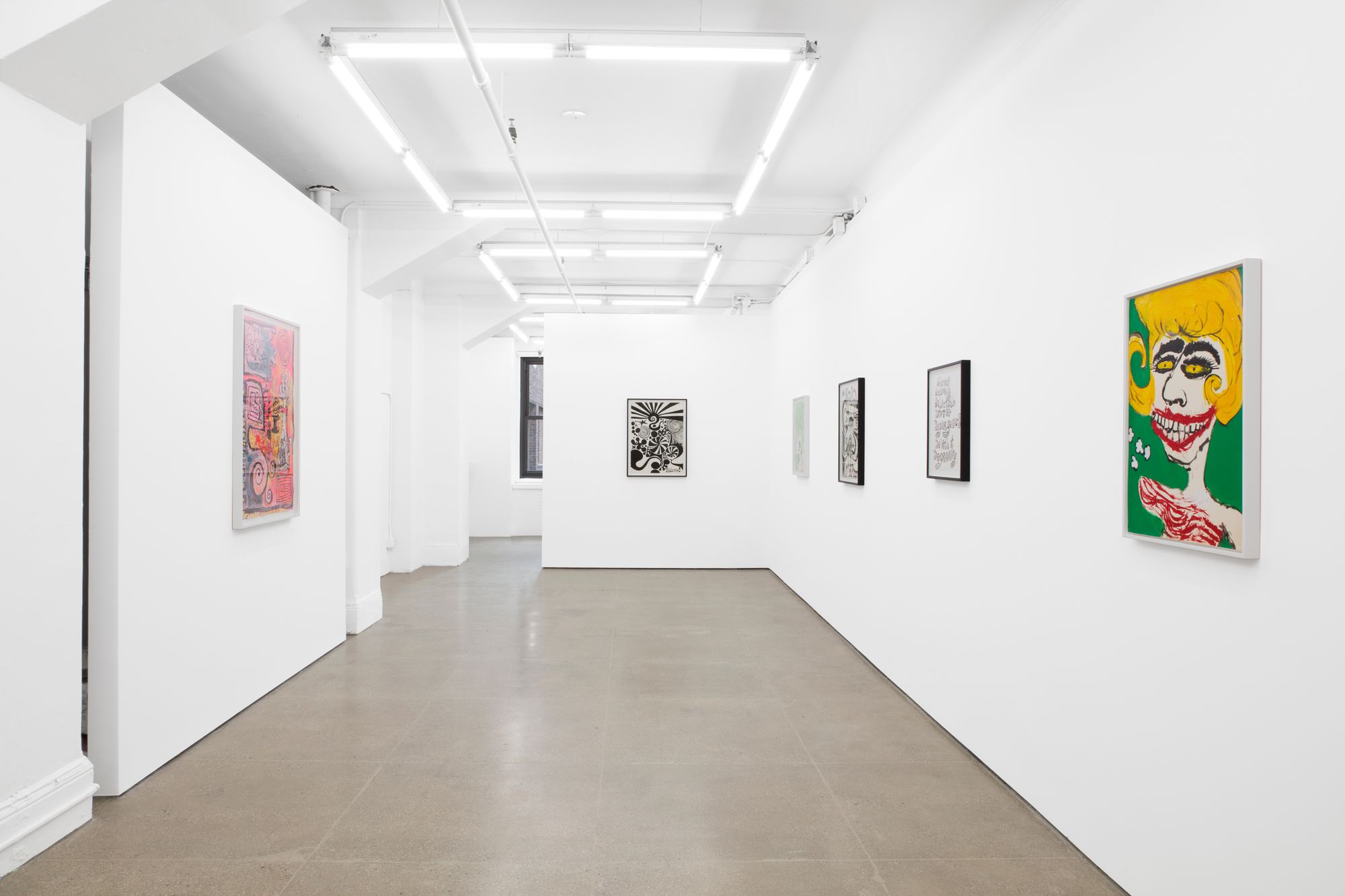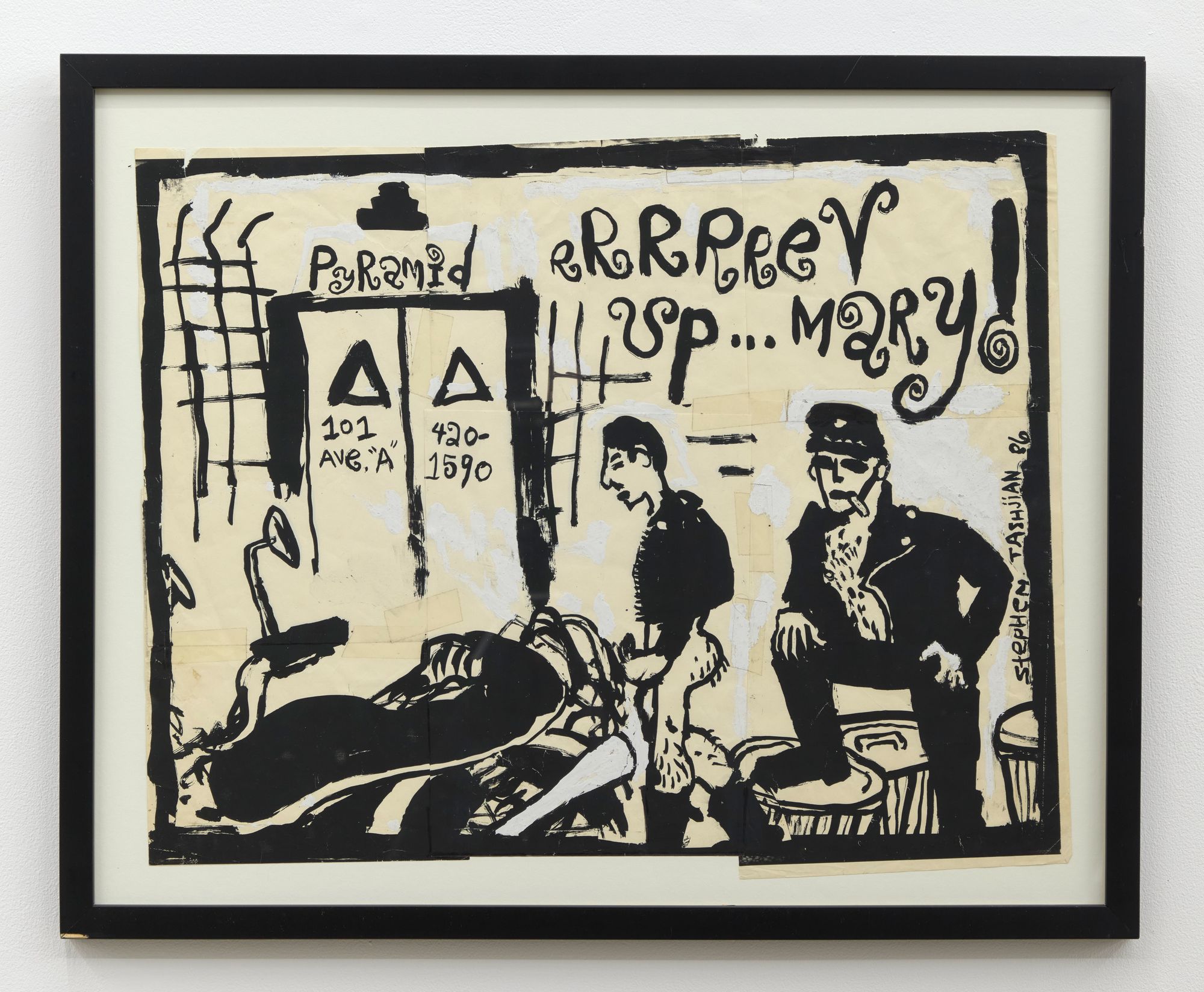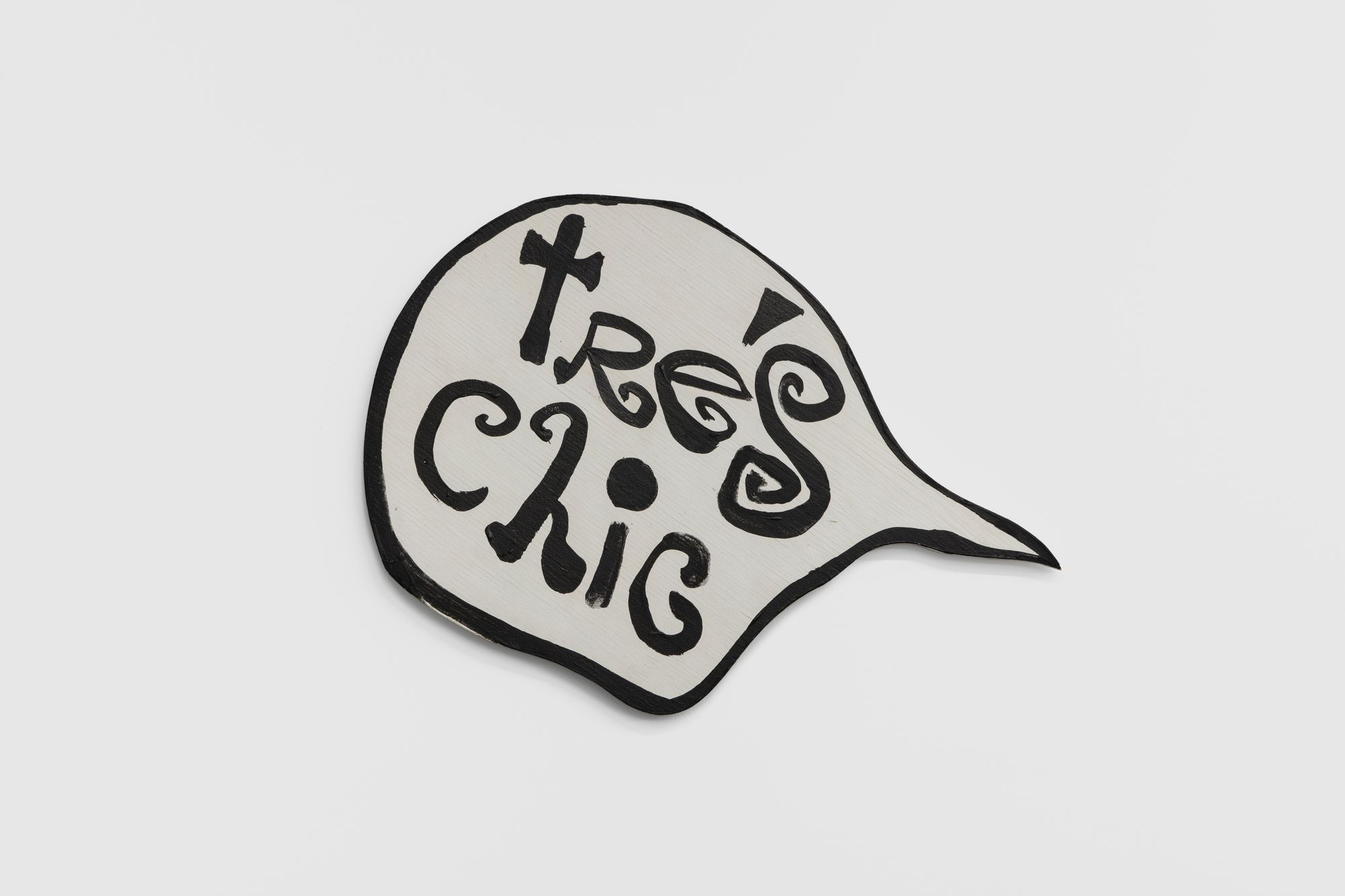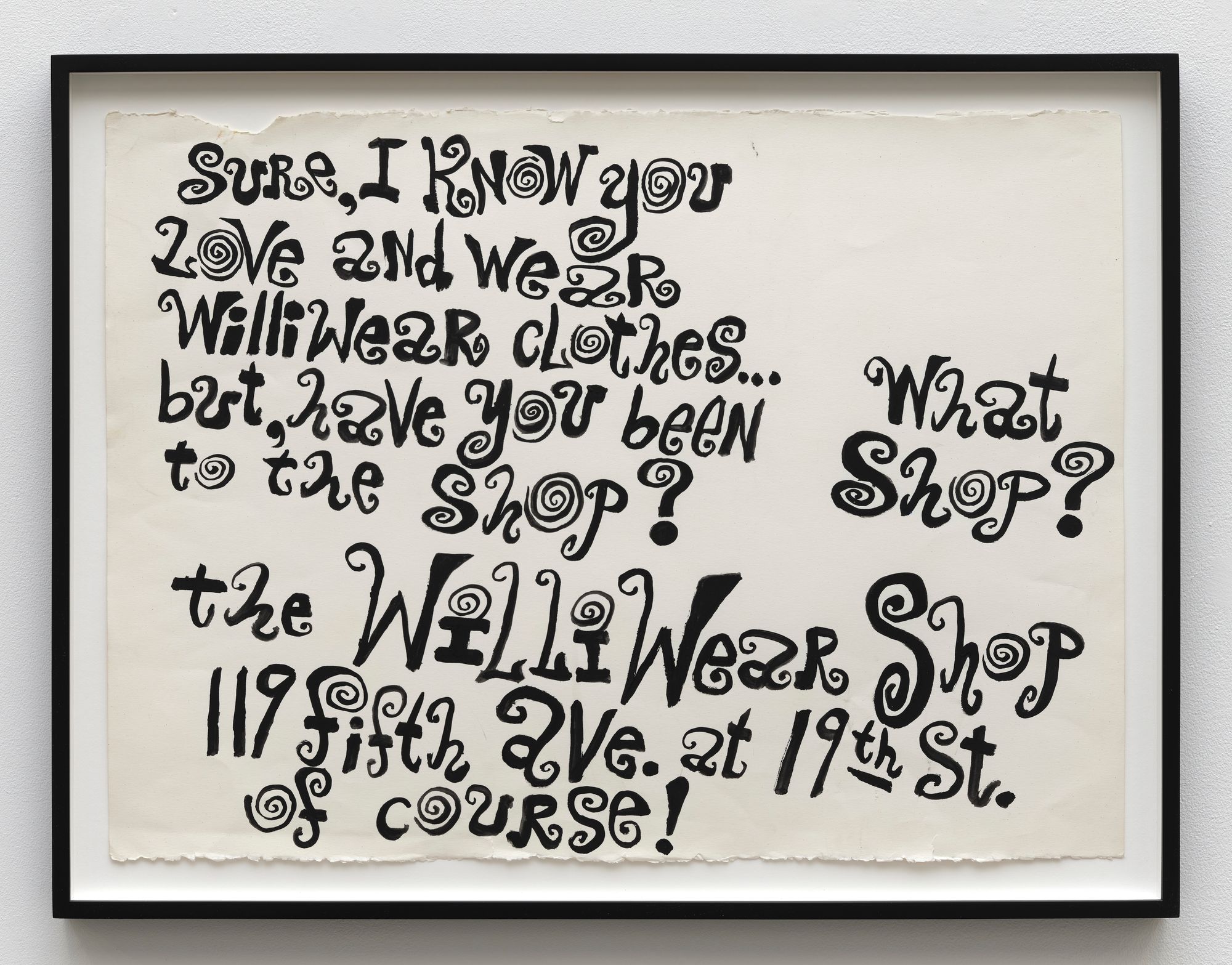
Past
Tabboo!
Early Works
Jan. 8–Mar. 2, 2025

Gordon Robichaux and Karma present Early Works, a multisite exhibition by Tabboo! on view in New York at 41 Union Square West, and 172 and 188 East 2nd Street, respectively, from January 8–February 28, 2025.
In the summer of 1982, Tabboo! arrived in New York City. Against a backdrop of Neo-Expressionism, Pictures postmodernism, graffiti, and the HIV/AIDS epidemic, Tabboo! developed an aesthetic universe of painting, performance, and text that would become foundational to the city’s new avant garde and its rearticulation in popular culture at large. His early work emerged from a collision of his longstanding interests—1960s psychedelia, pop divas, the black-and-white drawings of Aubrey Beardsley—and the downtown queer art scene he became an integral part of, alongside fellow Boston School friends such as Jack Pierson, Mark Morrisroe, and Pat Hearn. Over the course of the next decade, he would create exuberant paintings and works on paper; produce flyers and backdrops for now-legendary East Village venues like Pyramid Club, where he also performed; make a glitter-soaked banner for the pioneering drag festival Wigstock; and design lettering for the covers of dance group Deee-lite’s smash single “Groove is in the Heart” and album World Clique.
Text—rendered in his idiosyncratic calligraphic script—connects decades of Tabboo!’s work across media. He developed his signature lettering, characterized by its spiraling, curvilinear details, in reaction to the predominance of hard-edged, sans-serif fonts that dominated the visual culture of the early 1980s. Letters pirouette and curlicue across supports ranging from paper to textiles, gelatin silver prints to wood. His spirals extend and repeat beyond their linguistic tethers, forming borders reminiscent of Greek keys—known as meanders—around images or multiplying across the surfaces of works. Darkly witty and abundant with references to the era’s underground culture, Tabboo!’s writing appears on flyers for club nights, tarot cards, and advertisements for local boutiques like Fiorucci and Patricia Field; in speech bubbles that animate his illustrations; and adorning clothing from Willi Smith’s label Williwear, examples of which are on view at Gordon Robichaux. Enacting the performative nature of speech, language in his work variously punctuates, describes, and subverts the visual, with phrases like “sports at the Pyramid: drag racing” accompanying an image of a figure running out of the frame in platform heels. Untitled (tres chic) (1986), created for a Williwear window display, transforms a camp utterance into a wall sculpture that acts as a floating speech bubble for anyone, or any mannequin, who stands beside it.
The monumental Wigstock Banner (1990) on view at Karma features an array of illustrated queens that meld with the swaths of thinned-out acrylics that interact to create its ground. Painted for the the sixth annual outdoor drag festival organized by the legendary Lady Bunny, the twelve-foot-long canvas invigorates the abstract washes of Color Field painting with an unabashed embrace of neon hues and campy figuration. Many of the looks from his performances in drag, one of which was put to tape 1995’s Wigstock: The Movie, are recorded in a series of drawings that catalogue his numerous personae. Throughout the eighties, Tabboo! used self-portraits, in and out of drag, to explore iterations of his own subjectivity. Drawing equally from the psychological intensity of German expressionism and the camp of popular culture, Tabboo! depicted himself in glasses with stubble and hair standing on end in the impasto-laden Untitled (Self-Portrait) (1982), bewigged and grinning in the Pop-inflected Self-Portrait in Drag as Popcorn (1983), and vulnerable and exposed in the brushed-ink contours of Self Portrait Bald (1984).
As with his self-portraits, Tabboo! treats his depictions of friends, collaborators, and pop culture heroes with an approach to painting that he would come to call “emotional realism.” He created the gestural, sharpie and housepaint on cardboard Keith Haring (1983) during a live caricature night at the Pyramid Club, paring the artist’s likeness down to simple lines that nonetheless capture his essence. This and works such as Connie Francis at San Janero Festival (1982), Leering Man + Lambchop (1983), and Tammy Wynette (1983), dispense with naturalism, instead communicating affect through the artist’s insistent brushwork, distorted faces, and vibrant palette. Other, more traditionally “realist” paintings, like the still lifes Guido and Vita-Chick (both 1986), introduce perspective and modeling while retaining their emotional charge.
This survey of Tabboo!’s prescient 1980s output across media attests to his prolific production during his first years in New York. Over the following three decades, his influence—on art, graphic design, fashion, and popular culture—cemented itself as central to the identity of the city he still calls home.
Tabboo! (Stephen Tashjian, b. 1959, Worcester, Massachusetts) renders his subjects in a direct, intuitive style that he terms “emotional realism,” suspending figurative elements against dreamlike colorfields. Working primarily in acrylic, the artist often draws subjects from his surroundings, depicting cityscapes, friends, or flora and fauna in imaginative still lifes or tableaux. He also paints large, panoramic works and site-specific murals. These immersive settings recall the painted backdrops he made for performances in the 1980s and ’90s. While performing regularly himself, Tabboo! also designed numerous event fliers, posters, and album covers featuring his signature curvilinear text. Tabboo! lives in New York.
Recent solo exhibitions include Karma, Los Angeles (2023) and New York (2022, 2020); Gordon Robichaux, New York (2022, 2020, 2019, 2017); and Howl! Happening, New York (2016). His work is held in the collections of the Hammer Museum, Los Angeles; Institute of Contemporary Art, Miami: Museum of Fine Arts, Houston; Portland Museum of Art, Maine; and the Whitney Museum of American Art, New York.
Install (22)


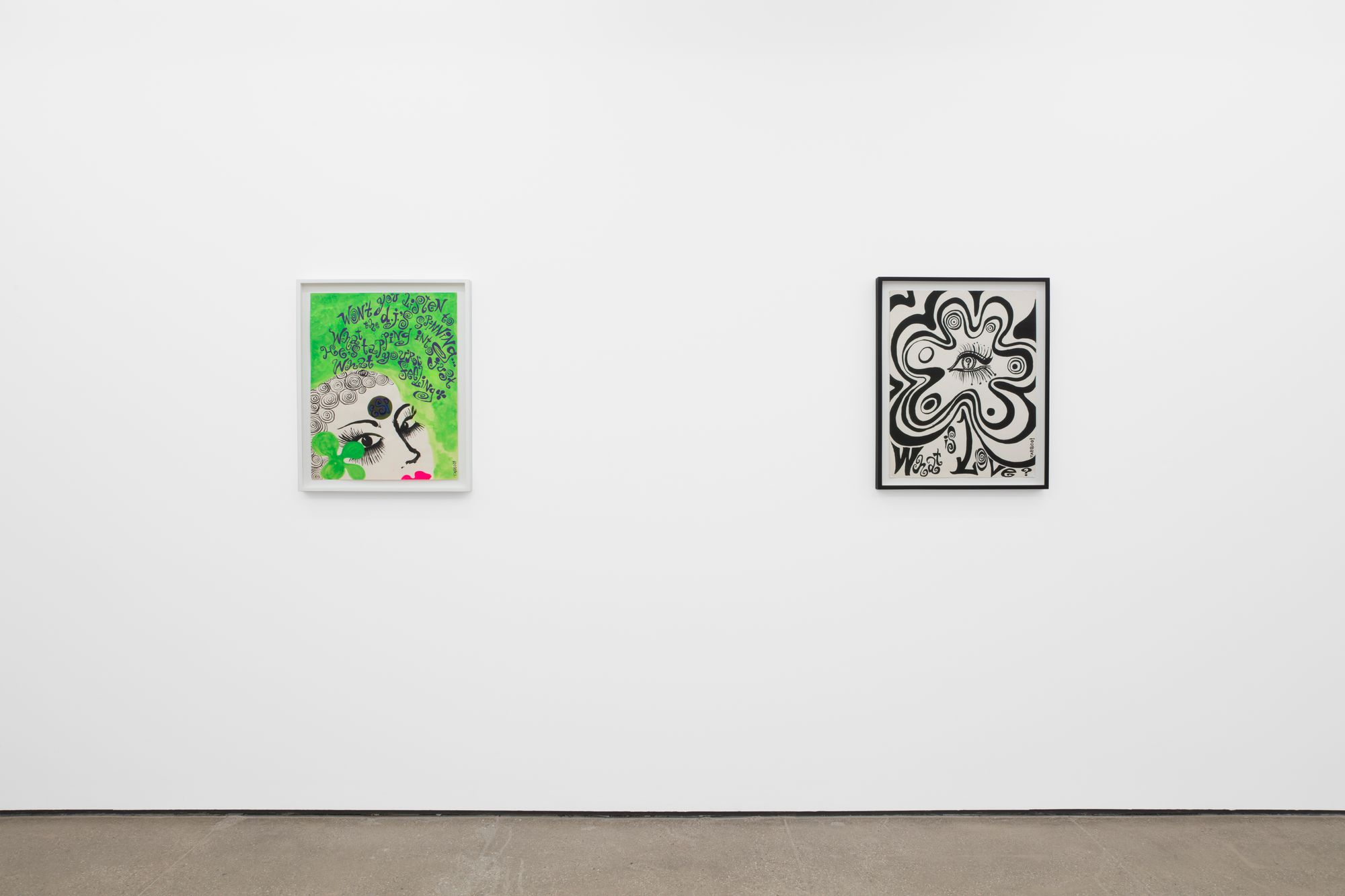

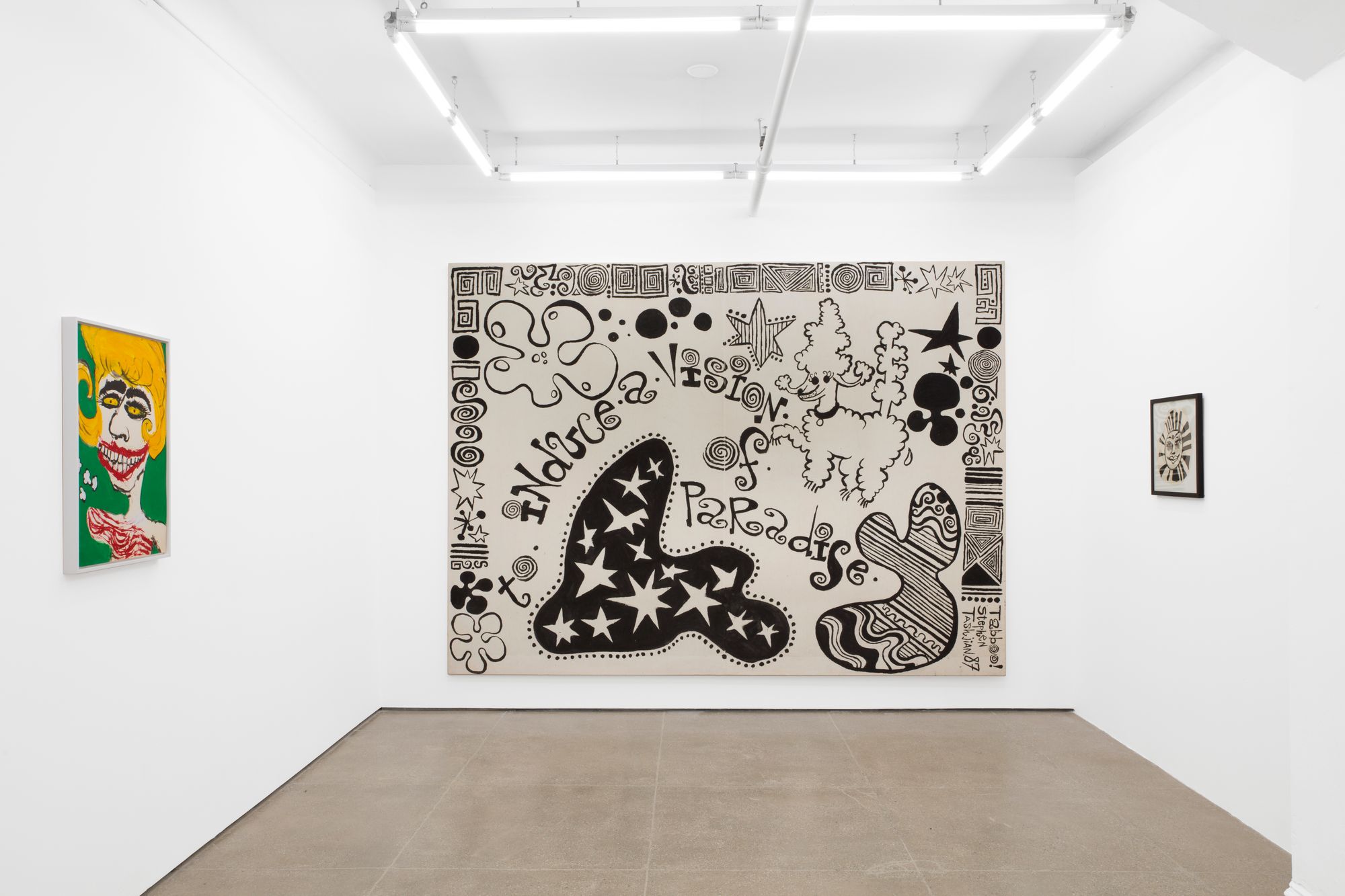

Works

Untitled
Acrylic on paper
30 x 22.25 inches, 33.125 x 25.25 x 1.5 inches framed
1989

Untitled (Deee-Lite ESP)
Acrylic on paper
24 x 19 inches, 27.25 x 22.25 x 1.75 inches framed
c. 1990

What is Love?
Acrylic on paper
24.25 x 19 inches, 27.125 x 22.25 x 1.5 inches framed
1990

Delicious, Delovely...
Acrylic on paper
18 x 16 inches, 21.125 x 19 x 1.5 inches framed
c. 1980s
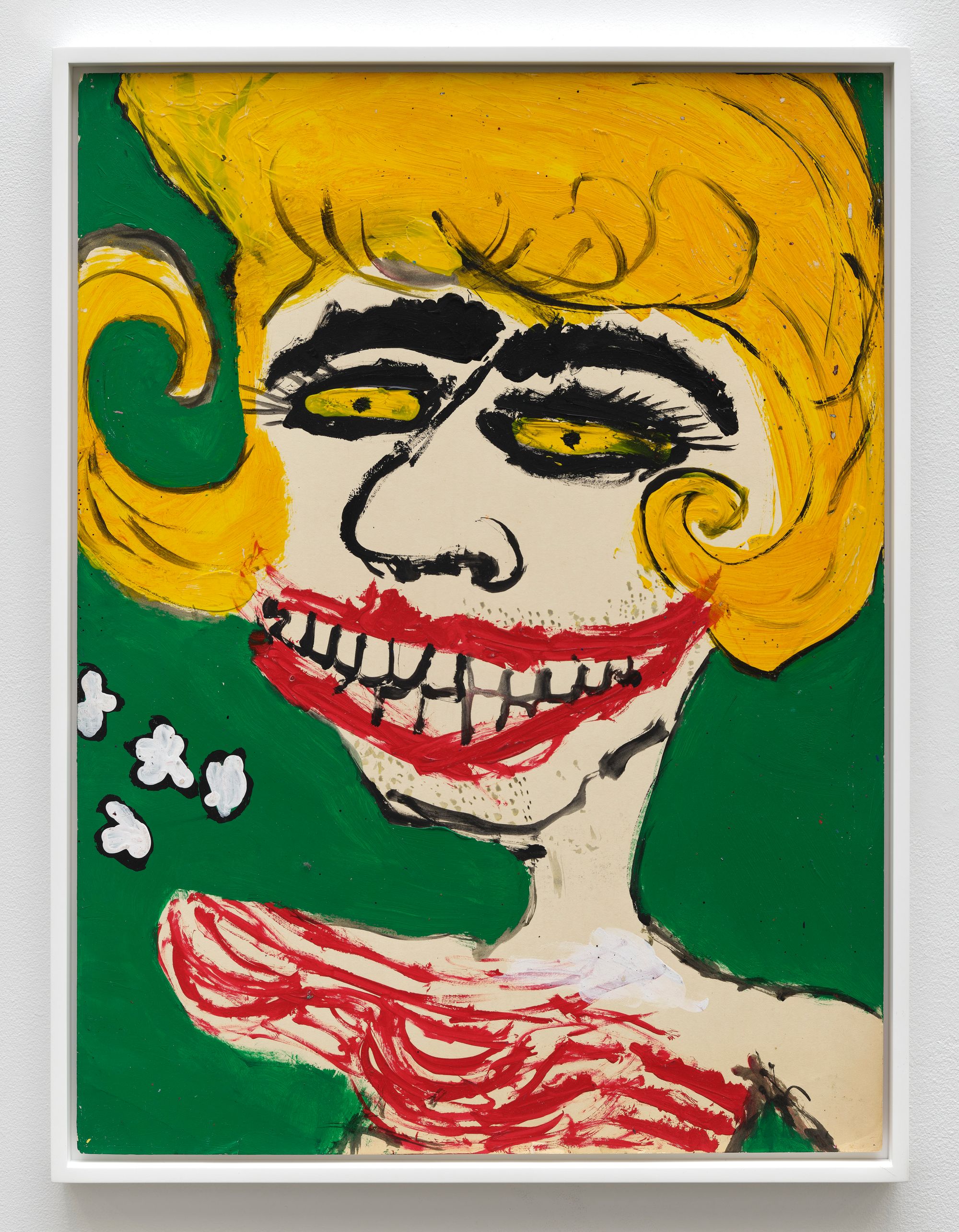
Self-Portrait in Drag as Popcorn
Acrylic on board
27 x 20.25 inches, 28.25 x 21.5 x 1.5 inches framed
1983

To Induce a Vision of Paradise
Acrylic on canvas
89 x 120 x 1.5 inches

